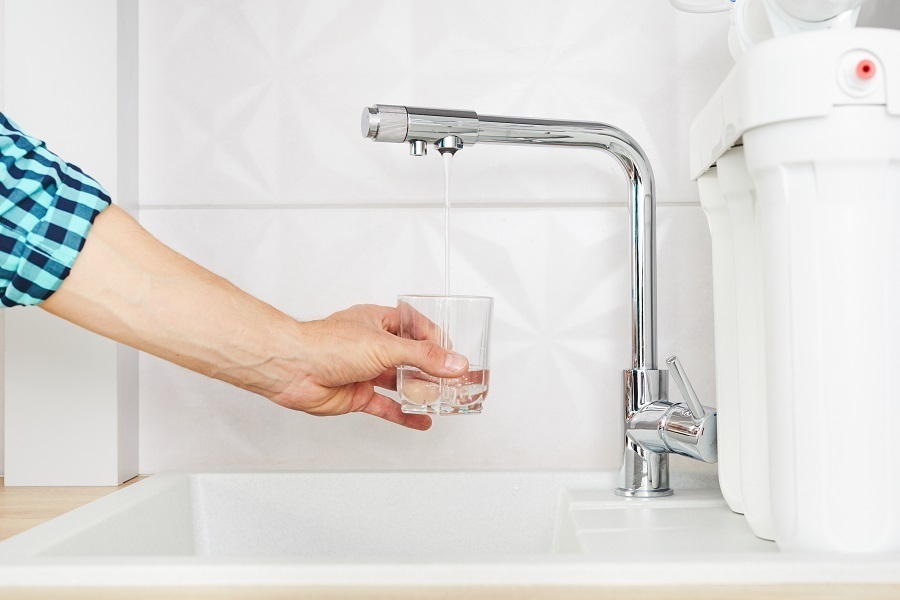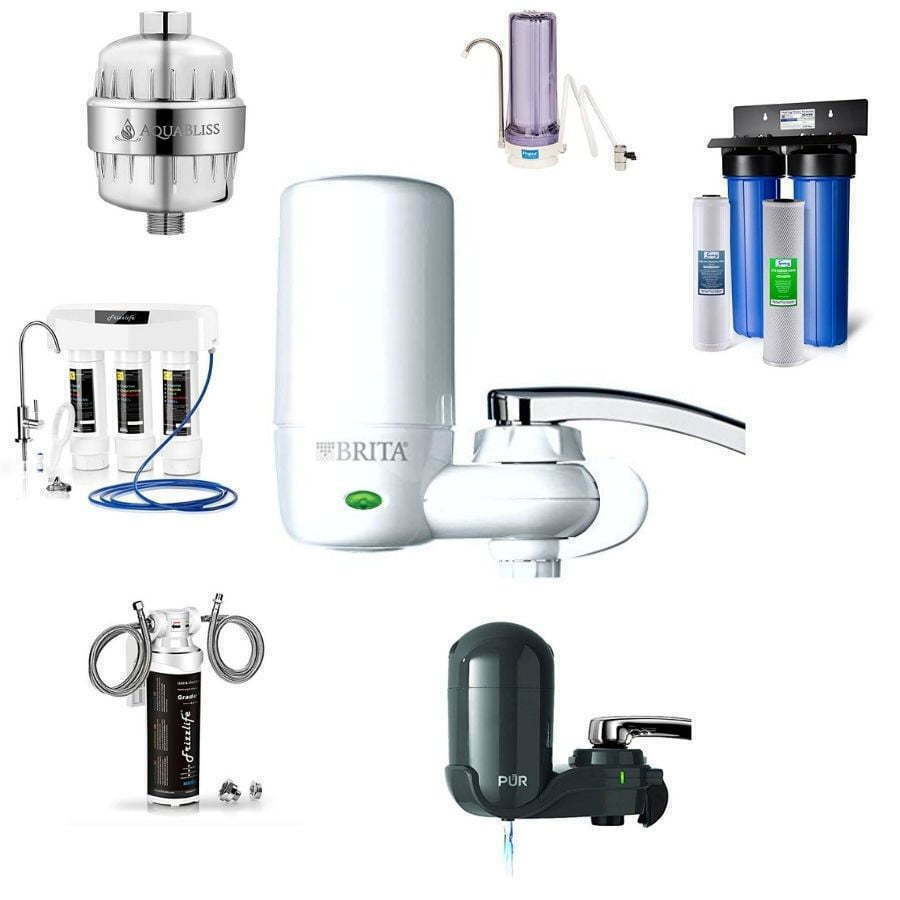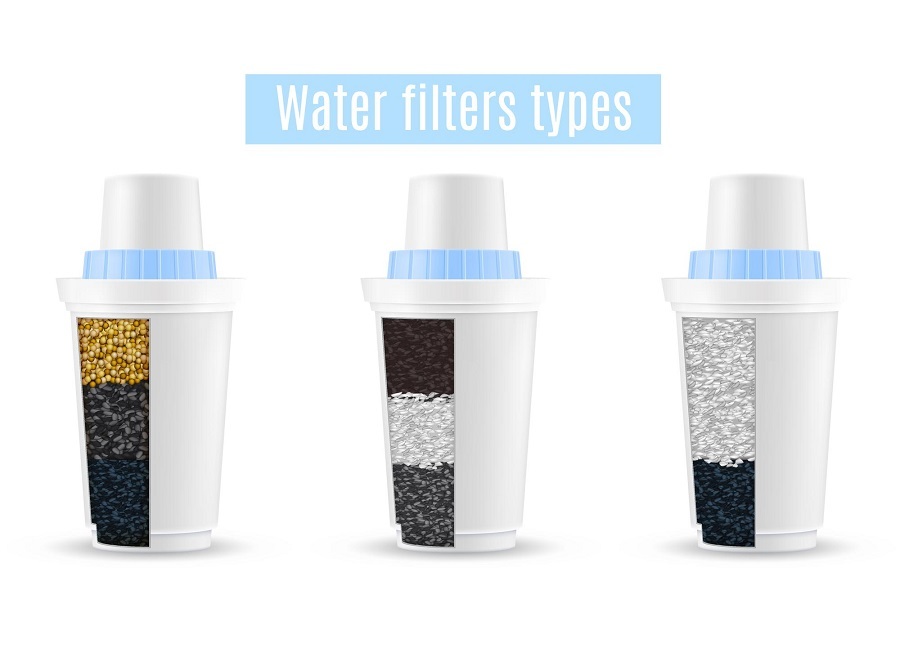Last updated on
In short, yes, home water filters are effective in what they are doing. But the real question is, what is their real purpose? Let’s find out.
We all see home water filters as something that is supposed to make our tap water better and healthier. But is our tap water that bad? Usually, unless there’s something seriously wrong with your water supply line or the public water you get to your home, it is safe to drink.
So what does the water filter really do? The answer is twofold: it makes the water taste better and softens it. That’s the purpose of most home water filters you can buy (and possibly have in your home).
Of course, not all of them are created equal. And filters indeed remove certain amounts of contaminants, but the truth is (as we will soon find out) that the water you get from the supply needs to be already filtered by the supplier for it to be safe. If it’s a private source (such as a well), it needs to be checked for contaminants. Only a commercial-grade water filter will make it safe to drink if it’s dangerously contaminated.
What's Inside
Can We Drink Tap Water?

Tap water companies offer clean, affordable, and healthy drinking water for the public in most areas (US, Canada, Europe, Australia). Tap waters are cheaper than bottled water, and they are more eco-friendly. But as always, there’s a caveat.
Unfiltered water can cause many different health problems like nausea and stomach pain. Sometimes specific contaminants found in the public drinking water can also make you very sick, sometimes even fatally. Thousands of people get sick per year because their drinking water is contaminated, even though they take precautions not to be using these contaminated sources.
Nuisance contaminants are things in the water that may have no or little adverse health effects, but these may cause staining and reduce detergent effectiveness. Taste is also subjective, meaning what tastes good to one person could taste bad to someone else.
Why Do We Need Water Filters?

It’s possible for bacteria and other germs to enter the water after it undergoes treatment processes, such as those used by your local water provider. Some chemicals introduced to the tap water during cleaning may also be unhealthy to drink. As a result of this, some people choose not to drink their tap water because they think that it tastes bad and doesn’t contain enough minerals.
There are many concerns with drinking unfiltered and unprocessed tap water: there may be bacteria or other germs (such as those caused by old pipes) due to flaws in how the untreated and unprocessed liquid is handled – whether by your local utility or through barely visible corrosion on outdated pipes. Due to these specific risks – including what some consider poor taste – people often decide not to drink their tap without first going through a filtration system which can eradicate any potential risks for bacterial exposure among others, providing tastier, better quality qualities of water for consumption.
A great solution is using a filter that can provide healthier tasting tap water and an extra sense of security in knowing that their tap is safe at all times.
Water Hardness
Although water hardness is a minor issue, it is seen as a negative. It can lead to scale buildup in pipes and thus reduce the lifespan of home devices. Some have argued that it’s harmful to your health, though this has never been scientifically proven.
Water Filters

Ever since there has been a problem with the quality of our water, many people are looking for ways to filter or purify their tap water. In this article, we will explore the various methods of removing contaminants from your tap water and the health benefits associated with different types of filtration. Filtration requires some form of a physical barrier such as sand to take out any impurities in the process, while something like distillation does not use any type of barrier but instead achieves good quality through boiling and then cooling down slowly over time. Filtration comparatively removes more bacteria than sedimentation, which is an alternative filtering method that uses gravity and layers. It can’t remove all types though.
What Does the Water Filter Remove?
NSF certification clarifies which contaminants were removed when choosing from a variety of brands. A particular model’s statements are important because other reps might be paid to promote their product. One should always read the label for themselves and become educated on their needs before making a selection, and never assume that just because one contaminant is removed, all others are also.
How Effective Are Home Water Filtration Systems?
What kind of water filtration system do you need and how does it fit into your home? An example would be a water filter pitcher. This is typically found in homes, but there are also filters that can attach to faucets. There are different filters available, some with an infection prevention rating or other benefits. You should understand what you want before shopping for a filter, since all types don’t offer the same technology.
A water filtration pitcher is any pitcher that can be filled from the top and includes a built-in filter. Water must pass through the filter before being poured out for drinking or other use. Pros include their inexpensive cost, ease of use, and that they never need to be installed. The cons are that depending on the model and pore size. It would be best if you replaced filters regularly or often.
The type of filtration system that you need depends on the amount of water you use. Some people drink filtered water in restaurants and cafeterias, so a filtration system for a water cooler is what they need to buy. Also, refrigerators come with their own filter, which supplies an automatic ice maker – but the filter needs to be replaced regularly. A filtration system for a water cooler can suit everyone who drinks clean filtered water at restaurants and caf
When a person launches into buying their first water filter, it can be tough to know what kind of system has the best features for their own particular needs. The first thing someone needs to do is determine if they need a whole house or point-of-use filtration. If only one person is drinking water in the home, they should purchase a point-of-use system either made by an individual company or by the faucet itself.
There are two kinds of faucet-filtered water systems – an attached filter (such as a faucet-mounted system) and filtration built inside the faucet. The benefit of an attached filter is that it’s easy to switch between the filtered and unfiltered water. Still, there can be many drawbacks such as higher prices and sometimes difficult installation.
A water filtration system can be a built-in or an under-sink. Built-in will not take up counter space, but some may require renovations to the plumbing. Under-sinks such as the filter system works by hovering underneath the sink and sends water through special pipes to the faucet with its own filters.
Whole house water filtration systems will treat all the water that comes into your home, which could be important if your neighborhood has high levels of chemicals or hard water. They often come at a higher price and require installation by a professional. You may not want your whole house to produce chlorine gas because it’s life-threatening, so make sure you buy a filter disposing of it.”
The most common type of filter has a physical component where the water is filtered through a fine mesh and chemical filtration where the water passes through activated carbon. Activated carbon absorbs some hazardous substances from the water, such as lead, VOCs, and chlorine if they are present.
Why You Need Filters
Often people say they can’t taste anything wrong with the water coming out of the tap, so some are questioning whether they need to fix or change their filter altogether because they’re not sure that filtering is necessary. Most people think filters do take care of most of our needs in terms of tasting good—but we still know this isn’t 100% accurate because contaminants may seep through them and back into your drinking water anyways, which can make you sick.
If choosing a water filtration system seems overwhelming, here’s one way to help weed out the ones that aren’t worth your time. One of the best things you can do is look for the “NSF” mark. That means the product has been evaluated by NSF International, an independent research company that tests all kinds of products to make sure they comply with public health standards, and their label lets you know the results. NSF International regularly tests and performs spot tests on products to make sure they’re continuously up to standards, and when it comes to your family’s health, that’s exactly what you want. Among the specific standards the NSF tests water treatment products for are distillation, cyst reduction, reverse osmosis, and taste and odor — in other words, whatever you want your water filter to do, NSF will be able to tell you how well it does it. If you don’t see their stamp of approval, keep looking.
It’s not always a clear-cut answer to the question of whether or not you need a water filter. Lead plumbing and being in close vicinity to pesticides and industrial waste can make drinking water unsafe, but according to Healthline, contaminants can still be present in the water after going through a filtered tap. There are several factors that make drinking water unsafe: lead plumbing, being in close vicinity with pesticides and industrial waste, et cetera. Contaminants can still be present in the untreated tap-water, even if it has gone through a filter. All evidence considered, it becomes clear that you may or may not need a filter depending on many variable factors (such as where you live).
How Do Water Filters Work?
How does water filtering work? Different water filters all have different functions. Activated carbon usually is in granular or block form and can remove 70 types of contaminates and leave behind healthy, good minerals. Reverse osmosis removes even more issues than activated carbon, but it also leaves zero healthy, good minerals. Ion Exchange targets specific substances that will then be removed to make a bottled water taste better and reduce scale build-up on fixtures. Distilling takes purified water from any common source as the first step before further removal processes occur, such as removing contaminants like ultraviolet light radiation or adding healthy nutrients back into the water for content purposes.
What Type of Water Filter Should You Get?
There are many types of water filters to choose from. You may want to be informed about what the possibilities are. What you need depends on your needs and the information you receive as a Consumer Confidence Report that reveals important aspects of your where and how clean your tap water is.
Most people use a pitcher filter, or something called under-the-sink or kitchen sink filters which can cost over $100 every two years to remove chlorine and chemicals used by public utilities to provide safe drinking water for their consumers at home, small business owners fix rather than replace such devices when they wear out leaving them vulnerable to changing circumstances.
In contrast, others who have enough money 100% filtered their very own utility line into an individual potable household supply with all modern purification amenities. The most recommended type for people who do not see any problems with their tap water wants some cleaning from its possible bacteria and other charcoal carbon, which removes any bad odor taste leftovers because of contaminants.
Combination carbon/KDF absorption filters remove chlorine and its byproducts best, ranging from shower and faucet filters to sink and whole-house filters. A regular carbon filter will not remove chloramine, an alternate chemical process than absorption. To find a certified filter that can meet your needs if you have one or two of these contaminants, visit NSF’s database online. Chlorine is one of many contaminants that could be in your water supply containers or pipes; most filtration systems come with a multi-stage purification which covers many different types of water contaminants like lead, mercury, pesticides, and some parasites like cryptosporidium or giardia virus spores, among others.




